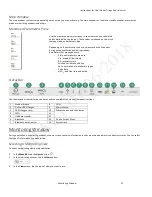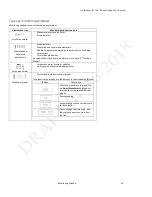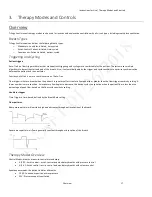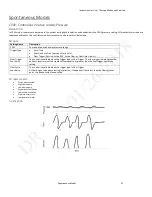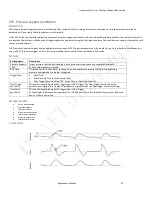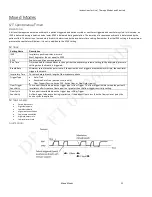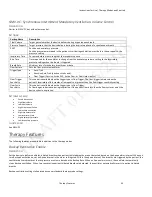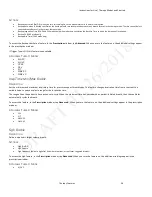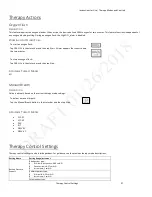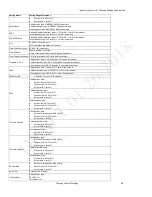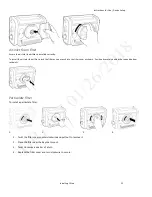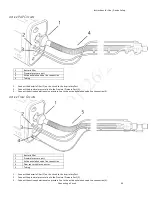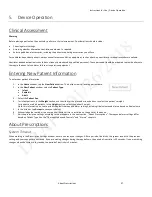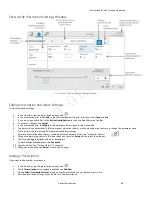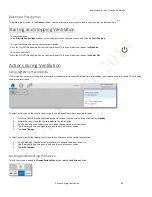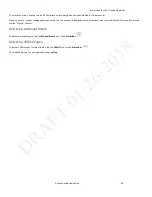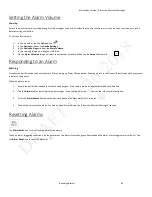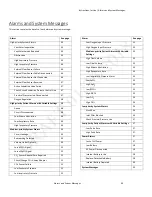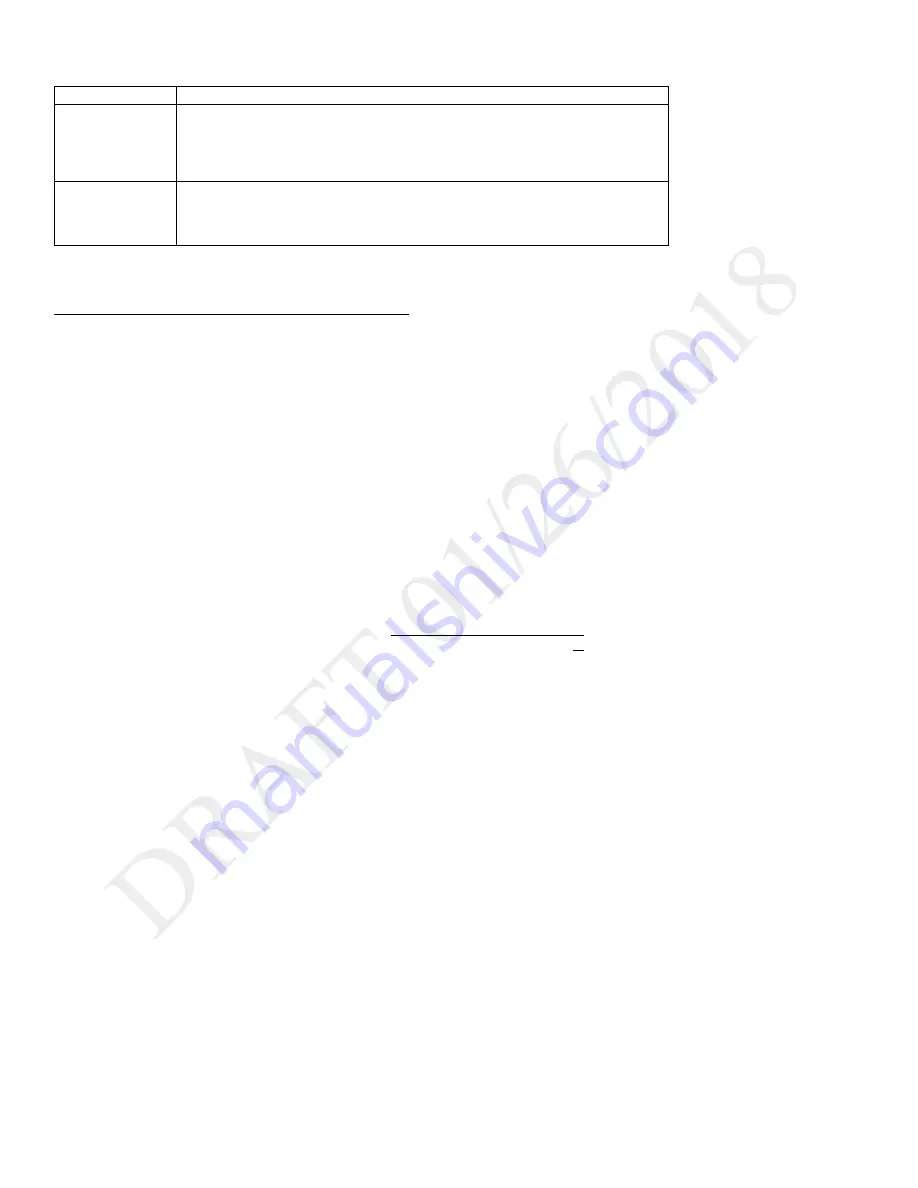
Instructions for Use | Therapy Modes and Controls
Dynamic Therapy Parameters
29
Setting Name
Setting Range/Increment
Pediatric patient type:
Dual limb or active flow: 35-400 ml
Passive or Active PAP: 50-400 ml
Increment: 5 ml
Trigger Type
•
Auto-
Trak (passive circuits only)
•
Sensitive Auto-
Trak (passive circuits only)
•
Flow Trigger (all circuits)
•
Off
Dynamic Therapy Parameters
It is unnecessary to perform an inspiratory hold to assess the plateau pressure and other lung parameters. The advanced measurement system of
Trilogy Evo estimates lung compliance, airway resistance, AutoPEEP and plateau pressure during normal mechanical ventilation without requiring a
static maneuver.
Dyn R
Airway resistance
is the opposition to the motion of gas within the airways. In the Measured and Calculated Parameters window, this value is
Dyn R
(dynamic resistance), so named because it
is estimated without requiring a static maneuver.
At the end of inhalation, Trilogy Evo estimates the airway resistance by computing the ratio between the driving pressure from within the lung to
the air flow. The flow term is corrected to take into account the contributions of the following:
•
Intrinsic PEEP, by subtracting the expiratory flow at the end of exhalation
•
The elastic recoil of the lungs, by adding the tidal volume divided by the r
espiratory time constant, τ.
(Respiratory time constant is the airway resistance times the summed compliance of the lung and chest wall)
Trilogy Evo calculates Dyn R using the following formula:
𝐷𝐷𝐷𝐷𝐷𝐷 𝑅𝑅 =
𝑃𝑃𝑃𝑃𝑃𝑃 − 𝑃𝑃𝑃𝑃𝑃𝑃𝑃𝑃
𝑒𝑒
𝑄𝑄
𝑝𝑝
(𝑡𝑡 = 𝑃𝑃𝐸𝐸𝑃𝑃) − 𝑄𝑄
𝑝𝑝
(𝑡𝑡 = 𝑃𝑃𝐸𝐸𝑃𝑃) + 𝑉𝑉
𝑡𝑡
𝜏𝜏
Where:
•
PIP
is the peak inspiratory pressure (pressure at the end of inhalation)
•
𝑃𝑃𝑃𝑃𝑃𝑃𝑃𝑃
𝑒𝑒
is the extrinsic pressure (pressure applied by the ventilator) at the end of the breath
•
𝑉𝑉
𝑡𝑡
is the tidal volume
•
𝑄𝑄
𝑝𝑝
(𝑡𝑡 = 𝑃𝑃𝐸𝐸𝑃𝑃)
is the patient flow at the end of the exhalation (EOE)
•
𝑄𝑄
𝑝𝑝
(𝑡𝑡 = 𝑃𝑃𝐸𝐸𝑃𝑃)
is the patient flow at the end of inhalation(EOI)
To understand the calculations adopted to compute Dyn R, note that the above equation can be rewritten as the classic equation for airway
resistance:
𝑃𝑃𝑃𝑃𝑃𝑃 − (𝑃𝑃𝑃𝑃𝑃𝑃𝑃𝑃 + 𝑃𝑃𝑃𝑃𝑃𝑃𝑃𝑃𝑃𝑃 + 𝑉𝑉𝑡𝑡/ 𝐷𝐷𝐷𝐷𝐷𝐷 𝐶𝐶) = 𝐷𝐷𝐷𝐷𝐷𝐷 𝑅𝑅 ∗ 𝑄𝑄
𝑝𝑝
(𝑆𝑆𝐸𝐸𝑃𝑃)
That is to say, pressure across the resistance equal to resistance times flow, where:
•
𝑃𝑃𝑃𝑃𝑃𝑃𝑃𝑃
𝑖𝑖
= −𝐷𝐷𝐷𝐷𝐷𝐷𝑅𝑅 ∗ 𝑄𝑄
𝑝𝑝
(𝑃𝑃𝐸𝐸𝑃𝑃)
this value is the intrinsic PEEP or AutoPEEP
(see the section, “AutoPEEP” below)
•
𝑃𝑃𝑃𝑃𝑃𝑃𝑃𝑃 + 𝑃𝑃𝑃𝑃𝑃𝑃𝑃𝑃
𝑖𝑖
is the total pressure (extrinsic plus intrinsic) at the end of the breath
Dyn C
Lung Compliance
is the ratio between the tidal volume and the changes in pressure. In the Measured and Calculated Parameters window, this
value is Dyn C
(dynamic compliance),
so named because it is estimated without requiring a static maneuver.
Trilogy Evo estimates the integrated compliance of the pulmonary system,
(
the summed compliance of the lung and chest wall
).
The compliance of
the respiratory system can be derived from the measurement of plateau pressure,
𝑃𝑃
𝑝𝑝𝑝𝑝𝑝𝑝𝑡𝑡
, using the relationship between the tidal volume,
𝑉𝑉
𝑡𝑡
, and
the difference between the
𝑃𝑃
𝑝𝑝𝑝𝑝𝑝𝑝𝑡𝑡
and PEEP.
Trilogy Evo calculates Dyn C using the following formula:

